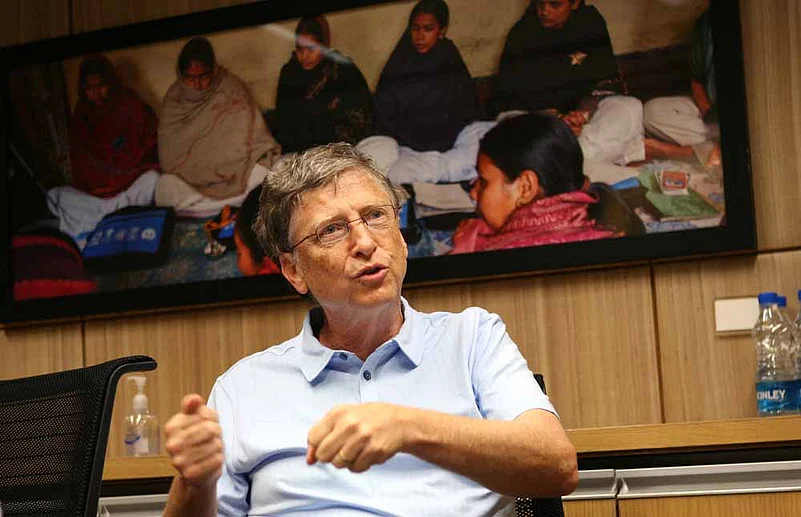Remember the famous spat between Jagdish Bhagwati and Amartya Sen on India’s economic vision? The noisy debate that followed seemed to cleave the educated middle class in half, each side finding an economic (and social) flag that they could rally around and salute. And soon, inevitably, it morphed into a proxy debate on Modinomics vs Sonianomics.
If this book is a reimagining of India, it would be rather more from the imagination of a Bhagwati than from a Sen. Being a McKinsey presentation, it could hardly be otherwise. But, contrary to what one might at first assume, it is not some kind of white paper produced by McKinsey’s consultants; it is a collection of essays by thought leaders from a variety of fields, from Bill Gates to Mukesh Ambani, Fareed Zakaria to Ruchir Sharma, Stephen Cohen to Patrick French, Ramachandra Guha to Ashutosh Varshney, Suketu Mehta to Harsha Bhogle. (There’s even a Rajat Gupta among the authors but, in a weird coincidence, he turns out to be a young director at McKinsey’s Mumbai office.) The book is, therefore, a lavish buffet of opinions and ideas, and one often cannot decide which of the sixty chapters one wants to open next. It is also, of course, a testimony to McKinsey’s clout that they managed to round up such a constellation of luminaries for this project.
The book sets out to ask questions that are uppermost in many minds at this point in history. Like, what is India’s true potential? Is it really living up to that potential? And, if not, what can we do about it?
One implicit theme that underlies the entire narrative is a basic Chindia equation: if China can do x, why the heck can’t India do y? Which is why perhaps one of the most thought-provoking essays is by Yasheng Huang, the China-born MIT professor. Huang confronts the belief that India’s growth is impeded by its messy democracy, while China’s authoritarian system allows it to power its way forward. Wrong, he says, and seeks to demonstrate that there’s no empirical evidence to support this, and that, in fact, there’s perhaps more reason for China to move in the direction of India’s political system than vice versa.
The themes explored in this book range from the transformational power of technology (and the opportunity to leapfrog technologies, as we did so spectacularly in the case of telephony, as Vinod Khosla points out) to the challenges of diversity. Yes, India’s diversity posed a very real existential threat in its early post-Independence years, militating for a strong centre, but today there is simply no alternative—the Mamata Banerjees and Karunanidhis notwithstanding—to a greater ceding of autonomy to the states (which, indeed, as Fareed Zakaria points out, is merely a sort of cyclical reverting to India’s historical and political mean).
Some of the essays are truly inspiring, like Salman Khan and Shantanu Sinha’s piece on the promise of digital education, based on the experience of their celebrated online education portal, the Khan Academy. But the single most inspiring piece is Bill Gates’s take on India’s campaign against polio—a little-known, but extraordinary case study that he himself was personally involved in, and “the most impressive global health success I’ve ever seen”. It demonstrates, says Gates, that when India sets an ambitious goal and mobilises its resources—human, scientific, business, manufacturing, political—its potential is simply enormous.
A couple of quibbles, though. While the crisply written essays—none longer than the average magazine article—help make this book enormously readable, they perhaps result in stimulating the imagination, without fully satiating the intellect. There are also niggling questions: like, is this essay really written by that corporate deity himself, or merely by some executive assistant ghost? In the case of Kumar Birla and Anand Mahindra the voice is clearly authentic, but in the case of others—Sunil Mittal and Anil Agarwal, for example—one can’t be entirely sure.
This volume, as McKinsey’s Dominic Barton and Noshir Kaka tell us in the introduction, is a successor to the firm’s earlier Reimagining Japan. What they don’t add is that many of the ideas in Reimagining Japan were subsequently picked up by prime minister Abe, and incorporated into his ‘Abenomics’. Who knows, some of the ideas here may, too, become part of public policy, and help make the India, as reimagined in this volume, a reality. If not wholly, or in full measure, at least very substantially, if you know what I mean.




















